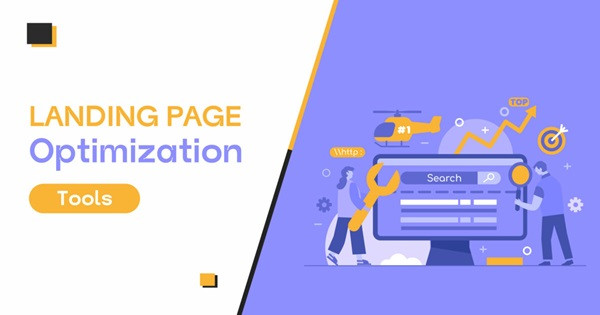Landing Page Optimization Tools
In the modern world of online marketing, landing pages play an important role in converting visitors into customers. However, creating an excellent landing page is not the end! You need to enhance its performance; that is where the real test begins.
This is where landing page optimization tools are much needed. These tools provide features and characteristics to tweak landing pages and increase conversion rates.
Landing page optimization tools provide details about users’ activity, help run tests, and offer tips on improving the page’s components.
Top Landing Page Optimization Tools
1. Unbounce
Unbounce is an all-in-one landing page software that boasts an impressive design editor coupled with notable optimization tools. This easy-to-use drag-and-drop editor provides marketers and designers with the tools they need to design beautiful, highly converting landing pages without touching a line of code. The software provides an extensive list of customization options for templates, which are categorized by industries and campaigns.
Among the features within the platform is a special AI-based tool called Smart Traffic, which can be found in Unbounce. Specifically, this feature takes the visitor to the landing page variant that has the highest conversion rate, given its characteristics and activity. Such an approach can bring a real boost to A/B testing and improve conversion rates over time.
2. Google Analytics
Although not strictly landing page software, Google Analytics is arguably the most important tool for analyzing and optimizing landing pages. Its extensive data capture and analysis features are very useful in understanding users’ behavior, the source of traffic, and conversion patterns.
The platform’s key aspect is real-time landing page analysis, which ensures that marketers can address shifts in trends or problems as soon as they are noticed. Google Analytics audience segmentation tools are especially strong, as they enable businesses to understand how various audiences engage with landing pages. This information can be very useful for post-targeting and content personalization for selected audience subgroups.
3. HubSpot
HubSpot’s landing page optimization tool is integrated with the inbound marketing and CRM suite of tools, which allows users to create, design, and optimize landing pages with an encompassing system. This is especially so as the tool works hand in hand with other aspects of HubSpot that encompass marketing, selling, and servicing.
HubSpot’s landing page builder is quite intuitive. It uses the drag-and-drop method to enable the creation of landing pages regardless of one’s technical skills. It offers a selection of templates suitable for various sectors and uses; these can be adapted to reflect the company’s image.
4. Instapage
Instapage is a highly developed landing page platform built for companies that want as many customization and optimization options as possible. Its primary strength is, therefore, in the design tools, which are more advanced than simple drag-and-drop and allow precise placement of elements on the page.
Another unique idea of the platform is Instablocks, which helps to save and reuse the sections of the page across the different landing pages. This not only saves time when coming up with the campaigns but also makes them uniform to an extent. Some of the other unique features that one can note include the integration features, especially in handling landing page projects in collaboration with other workers.
5. Hotjar
Hotjar is a heatmap, scroll map, feedback, and analysis tool that helps understand the behavior of users on the landing page. Its strength is in illustrating how the users engage with landing pages. In this case, it is particularly useful in supplementing the quantitative data provided by other analytic tools.
One of the platform’s most useful tools is the heatmap, which illustrates where people click, move, and scroll. This visual data can immediately point out which areas of a landing page draw viewers’ attention and which parts are overlooked, which is useful in designing and placing content.
6. Optimizely
Optimizely is a perfect tool for experimentation and optimization, containing tools for A/B, MVT, and personalization. The chance of conversion is boosted by its AI-enabled personalization engine that assists in providing a customized touch to visitors. The interface is flexible and simple to use, and the visual editor allows even those without coding experience to create and implement experiments with Optimizely; the statistics of the application also detail the efficacy of different variations. Nonetheless, Optimizely is a great tool that might be costly, especially for startups, and, indeed, the additional settings might be rather challenging to understand.
7. LeadPages
Leadpages is an easy-to-use tool that assists small companies in creating landing pages that can be customized with the help of a few clicks. It has integrated conversion features like pop-ups and alert bars that can be placed on the pages to capture the leads and increase engagement. It also includes SEO features as well as live analytics to track the performance of the web pages in Leadpages. The large number of templates it provides is suitable for different industries and needs and allows the generation of good-looking pages in no time. However, it seems that the programs have limited customization, and there are instances where the performance is slow, which can be disadvantageous, especially when working on large projects.
Source: https://www.agicent.com/blog/l....anding-page-optimiza


